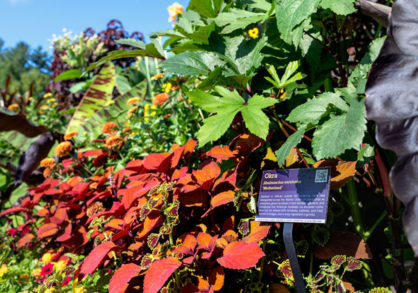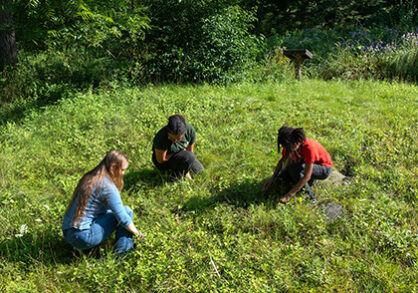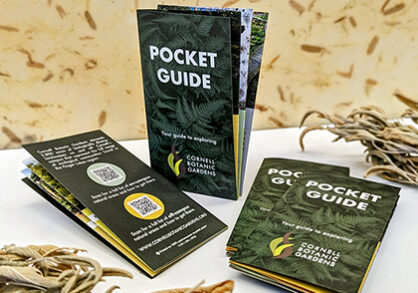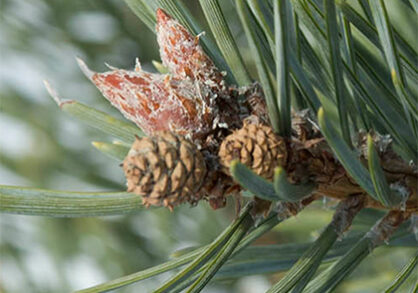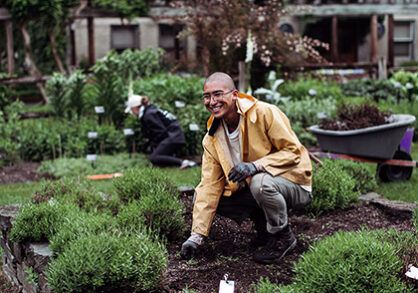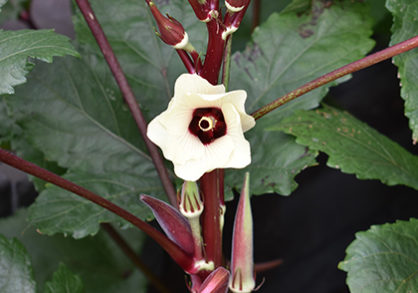CONNECTING PLANTS AND PEOPLES FOR A WORLD OF DIVERSITY, BEAUTY, AND HOPE.
FEATURED
Art, stories, and tours celebrate plants and the Black experience
Cornell Botanic Gardens’ exhibition “Seeds of Survival and Celebration: Plants and the Black Experience” honors […]
Native Lawns with Todd Bittner
Nature Calls podcast–June 28, 2024
Todd Bittner, director of natural areas, shares his perspective on creating more environmentally sustainable lawns using native grasses as an alternative to traditional turf.
Top sites in your palm
A new pocket guide makes it easy to explore Cornell Botanic Gardens and Cornell’s “foot-friendly” campus.
UPCOMING EVENTS
Mindful Botany at Brian C. Nevin Welcome Center
Join Cornell Botanic Gardens staff to observe the beauty and drama of nature unfolding on monthly nature walks. While exploring various paths and gardens each month, we will...
Botanic Gardens Tours at Brian C. Nevin Welcome Center
Take a relaxing stroll with a Garden Guide through the gardens around the Nevin Welcome Center and discover the beauty and diversity of our cultivated plant collections. Visit...
Discover the Hidden Rooms of the Zucker Shrub Garden
Named for Isabel Schnapps Zucker, Cornell Class of ’23, the Zucker Shrub Garden, located in the Botanic Gardens’ F.R. Newman Arboretum, is a remarkable place to view...
Land Acknowledgement
Cornell University is located on the traditional homelands of the Gayogo̱hó꞉nǫ' (the Cayuga Nation), members of the Haudenosaunee Confederacy.
Our Diversity, Equity, and Inclusion Efforts
Cornell Botanic Gardens embraces and actively works to increase diversity among all the communities with which we engage.
Seeds of survival: Botanic Gardens honors the Black experience
This garden display and exhibit shares the knowledge, skill, and resilience of enslaved Africans, their descendants, and today’s Black community and their deep connections to plants and the cuisines they inspired.
Our Gardens and Natural Areas
We are responsible for the natural beauty of the Cornell University campus including cultivated gardens, an arboretum, and natural areas. Together these comprise one-third of campus, and with off-campus natural areas, a total of 3,600 acres.
WHAT TO SEE IN SUMMER!
Our gardens and arboretum are bursting with blooms! Our natural areas offer ample opportunity to explore unique settings.
